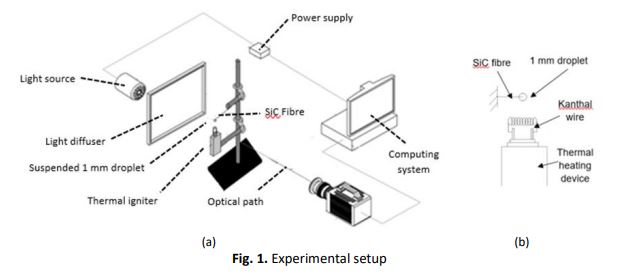Combustion Phases of Evaporating Neat Fuel Droplet
DOI:
https://doi.org/10.37934/arfmts.96.1.6069Keywords:
Fuel droplet, combustion phases, combustion stabilityAbstract
The combustion characteristics of fuel spray can be examined at a basic level by a fuel droplet combustion study. Evaporation processes of a fuel droplet involves few combustion phases mainly heating, boiling and disruptive phase. The transition of phases is found to be caused by two transient combustion process; mainly droplet heating and fuel vapour accumulation. The duration of combustion phases of tested neat fuel droplet in the present work is found to be consistent for each fuel. High volatility fuel is found to have the shortest duration of droplet heating and fuel vapour accumulation. Longer duration of boiling phase provides wider range of measureable burning rate to be done on tested fuel droplet. With precise quantitative measurement method conducted in the present work, high measurement repeatability is assured thus enabling the determination of droplet combustion stability categorization with clear definition throughout the lifetime of evaporating neat fuel droplet. Additionally, this paper summarises the common combustion phases involved during the evaporation of a neat fuel droplet.
Downloads

































